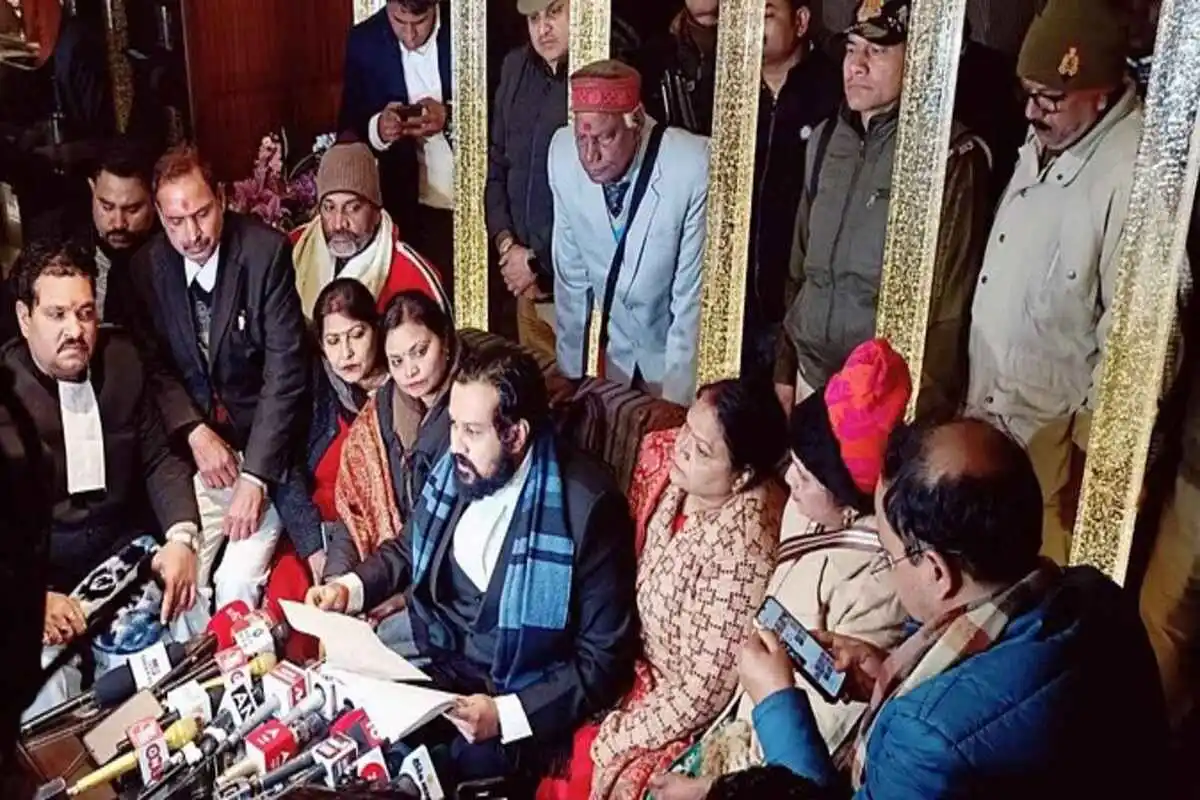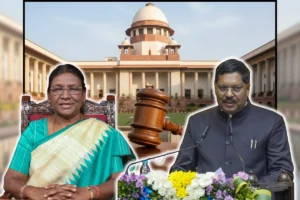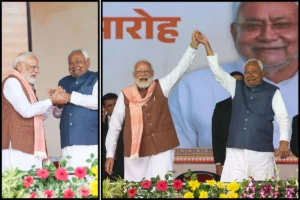
Gyanvapi case
The 839-page survey report by the Archaeological Survey of India (ASI) on the Gyanvapi complex has been obtained by five individuals, leading to significant revelations. Hindu lawyer Vishnu Jain from the plaintiff’s side is set to conduct a press conference at a hotel to discuss the findings.
According to the ASI survey, inscriptions of Janardan, Rudra, and Vishveshwar were discovered in the Gyanvapi complex, with references to Mahamukti Mandap. ASI emphasizes that these findings strongly suggest the presence of a Hindu temple. During the survey, a broken stone was found, confirming the government’s assessment. The report indicates that the temple was demolished on September 2, 1669, and pillars from the original temple were repurposed for the mosque. The basement S2 contained statues of Hindu deities, and ASI asserts that the western wall is a remnant of the Hindu temple.
#WATCH | Varanasi, Uttar Pradesh | Advocate Vishnu Shankar Jain, representing the Hindu side, gives details on the Gyanvapi case.
He says, "The ASI has said that during the survey, a number of inscriptions were noticed on the existing and preexisting structure. A total of 34… pic.twitter.com/fdBFeIsQAV
— ANI (@ANI) January 25, 2024
ASI contends that a Hindu temple structure existed before the mosque, and Vishnu Shankar Jain, the Hindu side’s lawyer, announces plans to seek a survey of the sealed Vajukhana from the Supreme Court.
The court mandated both parties to deposit Rs 3500 in the district court’s treasury to obtain a physical copy of the 800-page ASI report, rejecting email distribution. District Judge Dr. Ajay Krishna’s court order permits media coverage of the survey report, emphasizing the need for transparency in the interest of justice. The court encourages parties to scrutinize the report for possible objections.
To read more such news, download Bharat Express news apps



















